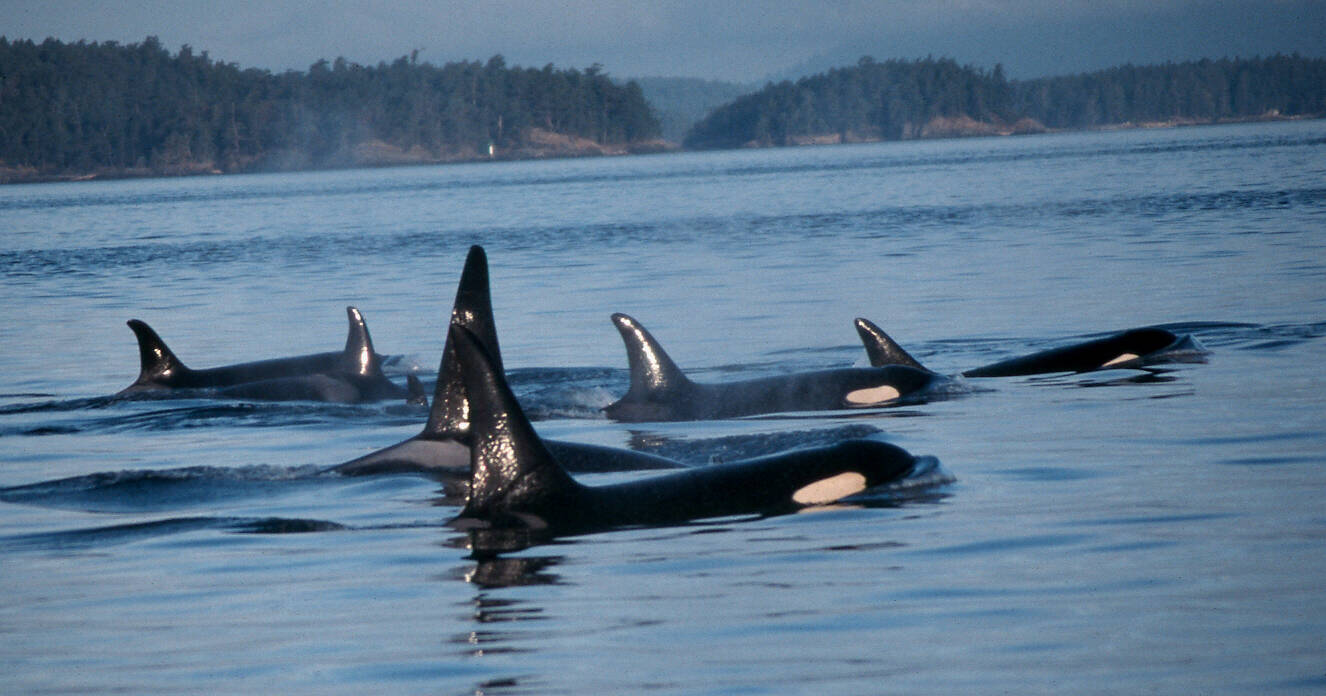Submitted by the Department of Environmental Stewardship.
As summer Chinook salmon runs wane in the Salish Sea, Southern Resident Killer Whales typically begin to travel further south in Puget Sound in search of prey. A study compiling 10 years’ worth of data found evidence that the whales’ diets shift from primarily Chinook salmon in the summer months to a mixture of Chinook, coho, and chum in the fall. While it is encouraging to see that the whales are able to diversify their diet during the leaner winter months, the salmon species they are supplementing with offer less nutritional benefit than Chinook, the largest and fattiest species of local salmonids.
In addition, the whales may have a harder time catching fish as they travel into more populous areas with higher vessel traffic. This summer, NOAA Fisheries’ Northwest Fisheries Science Center reported research findings that higher vessel speeds create additional acoustic interference that make it more difficult for the whales to find and catch their preferred prey. It’s important to remember that the impacts of boats near the whales are not just at the surface.
The discovery of Southern Resident L-47 as missing and presumed dead last month, followed by the announcement of 3 new pregnancies in the pods, has heightened the alert for boaters to give our Southern Resident Killer Whales extra space and quiet. The pregnant mothers, in particular, need to eat for two — and the added pressures of less Chinook and vessel disturbance can make it even harder for them to reach the caloric intake they need for healthy gestation.
In the face of these challenges, boaters can help protect the fragile Southern Resident Killer Whale population by slowing down, observing safety laws and guidelines in the presence of whales, and using the whale warning flag to alert others on the water.
Throughout Puget Sound, scores of boaters are utilizing the Whale Warning Flag to alert others to the presence of whales. Learn how the flag keeps boaters and whales safer by watching our instructional video: Boating with Whales in the Salish Sea – What You Need to Know, at https://youtu.be/WySYdl3gxk8. And if you don’t have one yet, get your whale warning flag at www.WhaleFlag.org.
Remember, federal and state regulations require boats to stay a minimum of 300 yards from the sides and 400 yards ahead or behind the Southern Residents’ path of travel. Vessels must also stay below 7 knots within a half-mile and are asked to turn off fish finders and/or depth sounders.
The San Juan County Department of Environmental Stewardship works to preserve freshwater resources, protect the marine environment, and coordinate recycling and solid waste throughout the County by implementing integrated projects and programs in partnership with others. Be Whale Wise is a partnership of governmental agencies, nonprofits and other stakeholders in British Columbia and Washington state to research, implement and educate regarding laws and best vessel practices to protect the unique and fragile marine resources found in the area.



